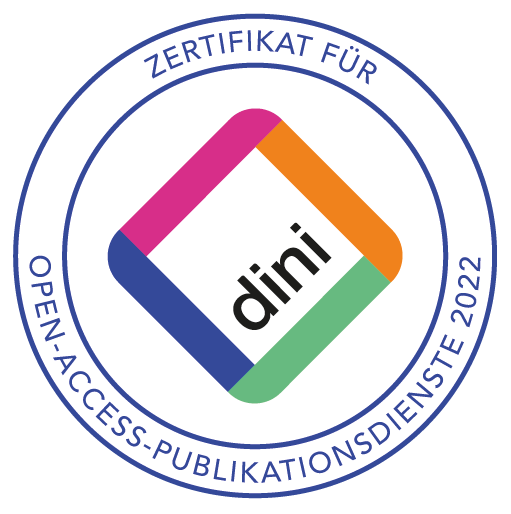Für »unsere Menschen«? Materielle Barrieren und deren Abbau im Alltag von Menschen mit Behinderungen in der DDR
- Die DDR verstand die gesellschaftliche Rehabilitation von Menschen mit körperlichen Beeinträchtigungen als sozialstaatliche Aufgabe. Während die Integration in die Arbeitswelt vergleichsweise gut erforscht ist, sind zu den Bereichen Wohnen und Mobilität noch viele Fragen offen. Welche Maßnahmen ergriff der Staat, um körperlich eingeschränkte Menschen in diesen Bereichen zu fördern? Welche Rolle spielten hierbei Kreisärzte und Stadtarchitekten? Welche Ergebnisse wurden in der Praxis erzielt? Erkennbar war vor allem seit Mitte der 1970er-Jahre das staatliche Bemühen, den Betroffenen mit Hilfsmitteln und Baumaßnahmen die gesellschaftliche Teilhabe zu ermöglichen. Doch die begrenzten Ressourcen und die planwirtschaftlichen Strukturen des SED-Staates erschwerten dies. Zudem konnte der Abbau materieller Hürden neue Barrieren hervorrufen – etwa in Fußgängerzonen. Betroffene entwickelten deshalb eigene, durchaus erfolgreiche Initiativen. Anhand von Beispielen aus Karl-Marx-Stadt, Halle an der Saale und Greifswald bietet der Aufsatz Einblicke in einen Alltag von Menschen mit Behinderungen, der von Ambivalenzen und Handlungsspielräumen ebenso geprägt war wie von Beschränkungen seitens staatlicher Stellen.
- The GDR conceived the social rehabilitation of people with physical impairments as the responsibility of the welfare state. While their integration into the world of work has been comparatively well researched, many questions remain unanswered with regard to housing and mobility. What measures did the state take to support physically impaired people in these areas? What role did district physicians and city architects play in this? What practical results were achieved? From the mid-1970s onwards, there were clear efforts by the state to provide assistance and implement construction measures that would enable the individuals concerned to participate in society. However, limited resources and the centrally planned economy of the SED state made this difficult. In addition, the removal of material obstacles could also create new barriers, such as in pedestrian zones. The individuals concerned therefore developed their own, quite effective initiatives. Drawing on case studies from Karl-Marx-Stadt, Halle an der Saale and Greifswald, the article provides insight into the everyday life of people with disabilities, characterised as it was by ambivalences, agency, and the restrictions imposed by state authorities.
| Author: | Ulrike WinklerORCiDGND |
|---|---|
| URL: | https://zeithistorische-forschungen.de/2-2022/6045 |
| DOI: | https://doi.org/10.14765/zzf.dok-2437 |
| Parent Title (German): | Zeithistorische Forschungen – Studies in Contemporary History |
| Title Additional (English): | For ›Our People‹? Material Barriers and their Removal in the Everyday Life of People with Disabilities in the GDR |
| Publisher: | ZZF – Centre for Contemporary History: Zeithistorische Forschungen |
| Place of publication: | Potsdam |
| Document Type: | Journal Article |
| Language: | German |
| Date of Publication (online): | 2022/12/20 |
| Date of first Publication: | 2022/12/20 |
| Release Date: | 2022/12/20 |
| Volume: | 19 |
| Issue: | 2 |
| First Page: | 281 |
| Last Page: | 302 |
| ZZF Topic-Classification: | Alltag |
| Soziales | |
| Politik | |
| Staatssozialismus | |
| Körper | |
| Materielle Kultur | |
| Raum | |
| Kommunismus | |
| Architektur | |
| Medizin | |
| Gesundheit | |
| Planung | |
| Infrastruktur | |
| ZZF Regional-Classification: | Europa |
| Europa / Westeuropa / Deutschland | |
| Europa / Westeuropa / Deutschland / DDR | |
| ZZF Chronological-Classification: | 1945- |
| Web-Publications: | Zeithistorische Forschungen |
| Studies in Contemporary History: Articles: | 2 / 2022 Disability History |
| Licence (English): |  Creative Commons - Namensnennung-Weitergabe unter gleichen Bedingungen 4.0 International (CC BY-SA 4.0) Creative Commons - Namensnennung-Weitergabe unter gleichen Bedingungen 4.0 International (CC BY-SA 4.0) |



